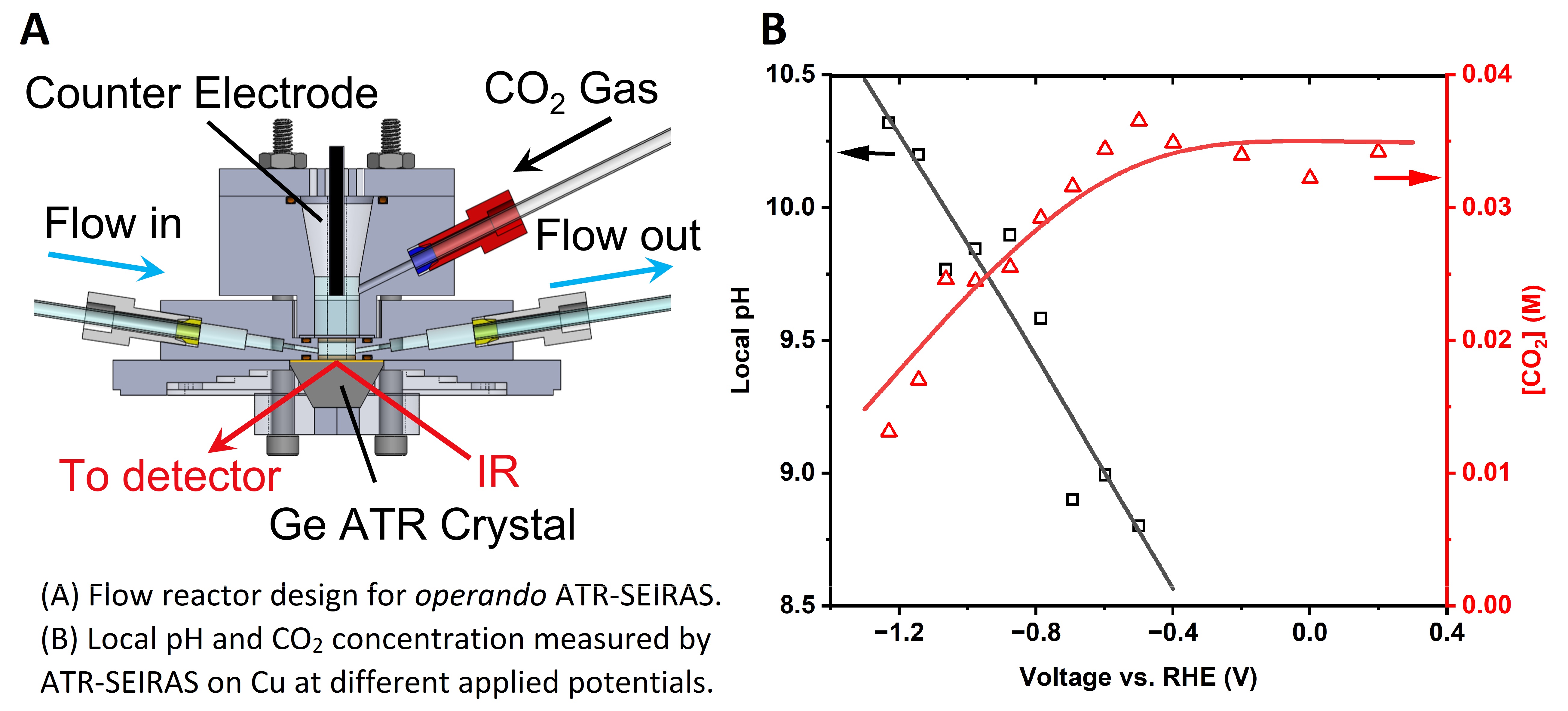2023 AIChE Annual Meeting
(670f) Understanding the Effects of Microenvironment and Mass Transport on Electrochemical CO2 Reduction Using Operando ATR-Seiras
Authors
Using ATR-SEIRAS, we detect the CO2 concentration and pH at the catalyst-electrolyte interface, finding significant variation from their bulk values (Figure B). The CO2 concentration can decrease by a factor of 3 or more and the pH can increase by 3 or more units. The differences in local pH and CO2 concentration from the bulk are highly dependent on the flow rate, as the flow controls the rate at which CO2 and HCO3- are replenished and basic species are carried away. Our work also elucidates the effect of flow rate on reaction selectivity, such as the observed increased production of CO relative to C2H4 on Cu foil at higher flow rates. These relationships between flow rate and selectivity are rationalized based on the observed microenvironment changes. The application of surface-sensitive spectroscopy to a CO2R reactor with well-defined and tunable flow illuminates the significant impact of mass transport and catalyst microenvironment on CO2R device performance.
